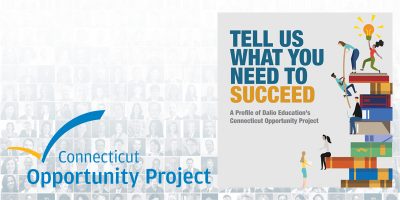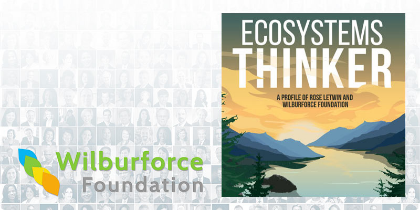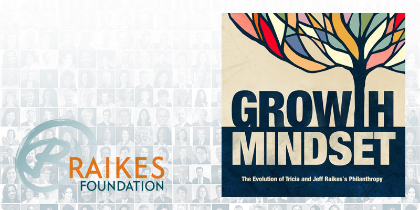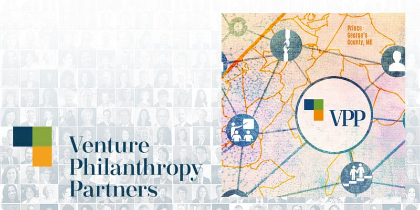Not Just for the Big Guys
We wish we had a nickel for each time we’ve had a discussion about helping grantees become high-performance organizations and heard a response like this from a funder: “I get it, but we’re not exactly the Gateses or Waltons.”
This reaction reflects the conventional wisdom that supporting grantee performance is relevant only for foundations with billions of dollars and hundreds of staff members. We have a different view. We’ve seen funders with significant but hardly stratospheric resources helping their grantees make the leap to high performance.
The UK’s Blagrave Trust, which focuses on helping disadvantaged young people transition successfully into adulthood, is a case in point. With an endowment of approximately $50 million, it’s not a massive foundation. It has only two (going on three) staff members and some outsourced finance and admin support. Its members typically work out of their homes when not on the road visiting with grantees (which they always call “partners”). And yet Blagrave is punching way above its weight—by combining intellectual rigor (brainpower), humility and openness with its grantees (heart), and a deep commitment to listening to the young people it aims to serve (ears).
“Walking beside Blagrave Trust as it has deepened its feedback practice has been incredible,” says David Bonbright, chief executive of Keystone Accountability. “Now we are looking on with mouths agape as Blagrave is working with others to change funder attitudes across the UK.”
What a tragedy to … lose credibility with funders for listening and acting on what we learned!
—Jo Wells
Director, Blagrave Trust
Shadows on the Equator
In 1997, Wells’s employer, an international NGO based in London, asked her to move temporarily to Brazzaville, Republic of Congo. Brazzaville, a large city in Francophone central Africa that had been devastated by civil war, wasn’t an easy place for a 20-something British woman to live. But Wells never felt unsafe, and her French was excellent. She built close relationships with many people who, despite losing relatives and having to start all over again, taught her lifelong lessons in resilience. All in all, it was a great assignment for someone who grew up with an abiding belief that people shouldn’t stand by and do nothing in the face of brutal inequities.
 When Wells arrived in Brazzaville, hundreds of thousands of internally displaced refugees were returning to their former homes after years in the bush. Wells was given three months to set up a program for delivering seeds and tools to help these families get back on their feet. “I was told, ‘Your role is to develop an agricultural rehab program…. It’s what we’ve done elsewhere. That’s our model,’” Wells recalls.
When Wells arrived in Brazzaville, hundreds of thousands of internally displaced refugees were returning to their former homes after years in the bush. Wells was given three months to set up a program for delivering seeds and tools to help these families get back on their feet. “I was told, ‘Your role is to develop an agricultural rehab program…. It’s what we’ve done elsewhere. That’s our model,’” Wells recalls.
But once she began listening to the families, she learned that these communities didn’t want seeds and tools. “I found out they had different views about what they wanted.” And yet the aid organization lacked the flexibility to take action in response to what they learned, because they feared they would lose credibility with their funders if they did. “That’s crazy to me now. What a tragedy to think we would lose credibility with funders for listening and acting on what we learned!”
Wells learned similar lessons in other hotspots around the globe. She frequently saw aid organizations and their funders failing to listen and respond to those they aspired to serve—and doing harm as a result.
In northern Uganda, for example, she saw agencies prioritizing children for aid, often taking them away from their grandparents to put them in child-friendly spaces while their parents worked. In the process, they completely ignored—and greatly undermined—the elders, who had been respected leaders and often the primary caregivers in the community. “The children got looked after, but there was quite significant harm in terms of community cohesion,” Wells says. “When we [later] did a study on the effects of the humanitarian response, we saw that ignoring the elders and their needs fundamentally [hurt] the social dynamics in those communities.”
Charitable Check-writing No More
Herbert Blagrave grew up in the rolling countryside of southern England and served as an artillery officer on the frontlines in the First World War. After the war, he became a major sports figure, playing professional cricket, directing the Southampton football club to a national championship, and training 350 winning racehorses.
He and his wife, Gwen, had no heirs. Neither did his brother, Peter. “Herbert Blagrave had a big estate. He wanted to put his wealth into causes close to his heart, including support for injured jockeys,” says Wells.
Years later, the trustees sold a large Blagrave property to make it possible for them to raise their level of giving. And that, in turn, helped them raise their sights. Four years ago, they hired Wells to transition the foundation from charitable check-writing to a more-impactful approach. “From the beginning of my time here, I was sure that some of the worst dynamics I saw [while delivering international aid] were not going to be part of the Blagrave narrative.”
We believe in the work you’re doing. Put the money where you most need it.
—Jo Wells
Director, Blagrave Trust
Her first year was a whirlwind—getting used to being on the funder side of the table for the first time, learning from other funders who operate in the southeast England, visiting charity leaders, and talking to the young people they serve.
She had assumed, perhaps naively, that the principle of listening to those you intend to serve and acting on their views would be embedded in the practice of domestic charities. She quickly discovered that she was mistaken. In fact, she learned that the situation was worse than what she had seen in the international arena.
“Although I saw the international humanitarian community making a lot of mistakes regarding community engagement, there was then and remains explicit policy commitments at the highest levels … to accountability to affected populations,” she notes. “When I joined the [domestic arena], I found little evidence of any narrative or debate around accountability to those we serve and how that happens in practice.”
High Performance Requires Listening
Wells has made “first, do no harm” the North Star for Blagrave. And that has meant putting listening to beneficiaries and acting on their insights at the core of all of Blagrave’s grant processes. “This idea that impact measurement is separate from listening and responding to user voices, I honestly don’t know where that came from,” says Wells. “You can’t have one without the other.”
On the first tab (“Listening“) of Blagrave’s website, the foundation asserts, “We believe passionately in the importance of listening and responding to those we seek to serve—both young people who benefit from what we fund, and organizations that benefit from receiving those funds.” Blagrave has backed up this aspiration with the following “walk the talk” measures.
Prioritizing Youth Voice in Applications: In its application form, Blagrave doesn’t ask potential partners to answer extensive questions, because Blagrave’s due-diligence process relies more on site visits than application forms. But one application question, in particular, requires a lot of thought and data: “What do young people think about your organization?” In a world of need, Blagrave wants to steer its resources preferentially toward those organizations that can answer that question well.
This idea that impact measurement is separate from listening and responding to user voices, I honestly don’t know where that came from.
—Jo Wells
Director, Blagrave Trust
Creating a Feedback Fund: In addition to funding organizations that already have strong listening practices, Blagrave also wants to help organizations improve their ability to listen, learn, and adapt. So she asked her board to support the creation of a $50,000 fund specifically for these projects. The results from the pilot, which Blagrave synthesized in “Feedback Fund 2016: Lessons Learned,” convinced the once-skeptical board to expand that fund significantly. At the end of 2017, Blagrave and three other funders will launch the Listening Fund with an initial investment of $1.2 million. Additional funders are considering adding to the pot.
Involving Youth in Board Discussions: To help her board understand the foundation’s work at a deeper level, Wells now invites young people to share their stories with board members. “I began by bringing three young people [associated with Fixers, one of Blagrave’s partners] to our board meeting,” she says. “They had a strong impact on the board. One young person talked … about being a bully when she was at school. She wanted people to understand that her bullying was a cry for help herself. Her own life was so crap, she wanted other lives to be as crap as hers. She’s now made a video about it. She wants people to take time to take bullies aside and ask them what’s going on in their lives.”
 Giving Youth Two Seats on the Board: The Blagrave trustees are now in the process of inviting two young people to become trustees, with full decision-making power—a practice almost unprecedented in the foundation world.
Giving Youth Two Seats on the Board: The Blagrave trustees are now in the process of inviting two young people to become trustees, with full decision-making power—a practice almost unprecedented in the foundation world.
Changing Course: Blagrave isn’t afraid to make significant course corrections based on what it learns from listening. For example, Blagrave has recently learned that even those young people who are able to get jobs often struggle to live independently. “We are hearing about young people who are making themselves homeless, because they simply cannot navigate the benefit system and don’t know where to turn for support.” Blagrave will soon bring its partners together to discuss what it should do differently in terms of services, research, and advocacy to support this group.
Stripping Out Burden: Based on feedback from partners, Wells and her regional grants manager, Tessa Hibbert, have stripped back their processes to ease the burden on applicants and partners. “We recently said we don’t want [customized] monitoring reports,” says Wells. “We want the same information they’re producing for their own internal management…. We don’t ask for info that we don’t know how we’ll use. We don’t spend time reading stuff that’s not useful for us or them. We choose to invest in relationships, not forms.”
The results were so powerful that they demanded a need for radical change. Change not only in how we delivered support, but in how our entire organization thought, acted and responded.
—Mayday Trust
Engaging in Research and Advocacy: In 2015, Blagrave commissioned Keystone Accountability to study youth charities’ listening practices. And in 2016, Blagrave and the Esmee Fairbairn Foundation commissioned Listening for Change, which shed light on the many ways in which funders are missing opportunities to encourage their partners to listen to and learn from their clients. Blagrave also helped convene the first ever UK Feedback Summit, in November 2016, to help improve listening practices across the nonprofit sector.
How Listening Improves Results
When organizations adopt robust listening practices, they almost inevitably discover challenges hiding in plain sight.
An organization that supports disabled young people used Blagrave’s resources to commission an independent survey of its young clients and their parents and then followed up with interviews. The organization learned that there were no afterschool opportunities for 16- to 18-year-olds with special needs. They used that information to convince other providers to increase their services and erase this service gap.
 Wells introduced the Mayday Trust, a charity based in Oxford which helps young people successfully transition out of homelessness, prison, and foster care, to Bonbright and other leaders in the feedback community. Mayday Trust’s leaders used what they learned to build processes for surveying homeless clients. The feedback wasn’t easy to hear, because it challenged everything about the charity’s model. “Pat McArdle is a courageous, passionate leader,” says Wells. “She thought she and her staff were responsive. She knew they were passionate about supporting vulnerable individuals. But they heard from their clients, ‘The focus on needs makes us feel small. There’s no space to talk about the real underlying issues we have.’”
Wells introduced the Mayday Trust, a charity based in Oxford which helps young people successfully transition out of homelessness, prison, and foster care, to Bonbright and other leaders in the feedback community. Mayday Trust’s leaders used what they learned to build processes for surveying homeless clients. The feedback wasn’t easy to hear, because it challenged everything about the charity’s model. “Pat McArdle is a courageous, passionate leader,” says Wells. “She thought she and her staff were responsive. She knew they were passionate about supporting vulnerable individuals. But they heard from their clients, ‘The focus on needs makes us feel small. There’s no space to talk about the real underlying issues we have.’”
In response, Mayday completely changed how they work with their clients. “The results were so powerful that they demanded a need for radical change,” Mayday acknowledged in its Wisdom from the Street report. “Change not only in how we delivered support, but in how our entire organization thought, acted, and responded to make sure the individual was at the heart of every decision we made and every action we took. A whole cultural change was needed. So that’s what we did.”
Partner Voice
To get a partner’s perspective, we reached out to Steve Crawley, the longtime head of Youth Action Wiltshire, an organization with an annual budget of $800,000, nine full-time staff, and a focus on vulnerable youth in rural communities largely neglected by other service providers. Crawley has been working in the charitable sector his entire career and loves what he does. With a warm smile, an innovative mind, and ever-present baseball cap, he’s the kind of leader who can just as easily inspire a trustee of major foundations as a young man struggling to stay in school.
Based on Youth Action Wiltshire’s strong reputation in the community and the trust it had built with youth, Wells reached out to Crawley shortly after she joined Blagrave. She was interested in learning about his services for youth not in education, employment, or training (a group known in the UK as “NEET” youth).
From the first meeting with Wells, Crawley felt at ease. “It was not the kind of meeting with shirt and tie and you feel nervous the whole time,” says Crawley. “It was a very supportive meeting. She asked in-depth questions about why we had planned as we had.”
The biggest thing with Blagrave is that they understand our work well enough that I can talk about things that need to change [in] our work.
—Steve Crawley
Head, Youth Action Wiltshire
Wells was impressed with the organization’s youth outcomes and the way beneficiary feedback contributed to those outcomes. For example, she learned that when Youth Action Wiltshire conducts volunteering projects for NEET youth, it does so in a bottom-up, youth-driven way. “We provide some training at the start—leadership training, problem-solving training,” says Crawley. “Then we help them carry out a needs analysis in the community. Then they get to decide what project they want to conduct. They say how the budget is going to be used. They set the timeframe.” Crawley acknowledges that it’s more challenging for his staff to manage that way. But he’s learned that if adults take the lead, there’s less ownership, and the project doesn’t achieve the same impact.
Crawley has high praise for Wells. “Jo is the most informed grants manager I’ve ever talked to,” an amazing statement given that Wells has only been working on youth issues for four years. He has similar praise for Hibbert, who long ago worked for Youth Action Wiltshire’s team focused on young people caring for ill family members. “She’s fabulous,” he says. “She knows all about Wiltshire … and has taken the time to map provision of services in Wiltshire. They have a thorough understanding of the challenges young people face here.”
He also has praise for the kind of support they’ve provided. During Blagrave’s first three-year grant, “They provided us with specialists that were [tailored to our needs], such as Feedback Labs, who’ve helped us truly converse with those we didn’t successfully support. We wanted to understand the 10 percent of people for whom we’re not the right support and why we weren’t right for them.” Blagrave’s second three-year grant was in the form of general operating support. “They said, ‘We believe in the work you’re doing. Put the money where you most need it.’”
As a result of four years of mutual trust-building, Crawley can share the good, the bad, and the ugly with Wells and Hibbert without fear of losing support. “The biggest thing with Blagrave is that they understand our work well enough that I can talk about things that need to change [in] our work.”
Conclusion
Wells is quick to point out that she’s uncomfortable with others saying Blagrave is an exemplar. “We’re at the beginning of this journey,” Wells says. “That’s not just me being humble. That’s the truth.”
That may be the case. But four years into Wells’s tenure, Blagrave has made significant progress on the journey to high-performance funding.
- Blagrave’s executive team and board offer multi-year grants, because they know the problems they’re addressing can’t possibly be solved in a year or two.
- They model listening to partners and those they aspire to benefit—rather than simply supporting partners to do more listening.
- They are willing to make significant programmatic changes in response to new insights and data from partners, beneficiaries, or other funders.
- They pay heed, not just lip service, to Wells’s learned-the-hard-way commitment to “do no harm.”
- They’ve moved almost entirely to flexible, general-operating support that enables partners to learn and adapt.
- They ensure that external evaluations have real learning value for partners and are not just hoop-jumping exercises for the benefit of funders.
- They hold themselves accountable for a long list of commitments to the organizations they fund.
- They join with other funders rather than needing to invent and lead everything themselves.
- They share their learnings for the benefit of others in their field.
- They amplify the voices of their partners and the young people they serve.
So yes, like all funders, they have a long way to go before they could even entertain the idea of resting on their laurels. But so far, they’re making all the right moves. And funders of any size would be wise to take a look.
Do you want to learn more about how donors and grantees can work together to enhance their effectiveness? Read about Funding Performance here, and let us know your thoughts.
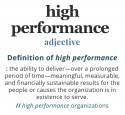
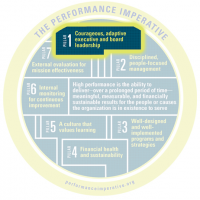
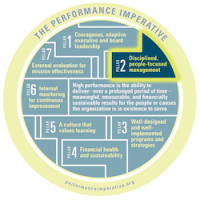
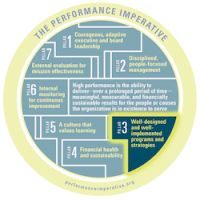
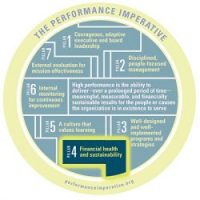
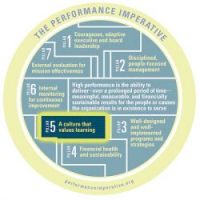
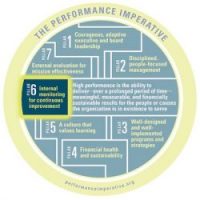
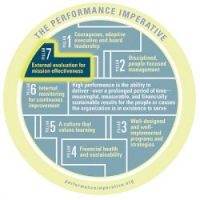
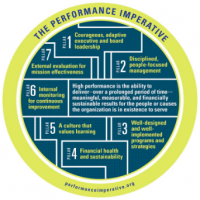
 When Wells arrived in Brazzaville, hundreds of thousands of internally displaced refugees were returning to their former homes after years in the bush. Wells was given three months to set up a program for delivering seeds and tools to help these families get back on their feet. “I was told, ‘Your role is to develop an agricultural rehab program…. It’s what we’ve done elsewhere. That’s our model,’” Wells recalls.
When Wells arrived in Brazzaville, hundreds of thousands of internally displaced refugees were returning to their former homes after years in the bush. Wells was given three months to set up a program for delivering seeds and tools to help these families get back on their feet. “I was told, ‘Your role is to develop an agricultural rehab program…. It’s what we’ve done elsewhere. That’s our model,’” Wells recalls. Giving Youth Two Seats on the Board: The Blagrave trustees are now in the process of inviting two young people to become trustees, with full decision-making power—a practice almost unprecedented in the foundation world.
Giving Youth Two Seats on the Board: The Blagrave trustees are now in the process of inviting two young people to become trustees, with full decision-making power—a practice almost unprecedented in the foundation world. Wells introduced the
Wells introduced the 
